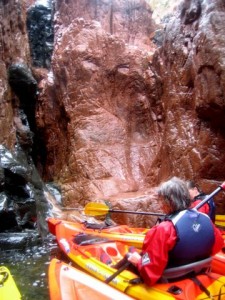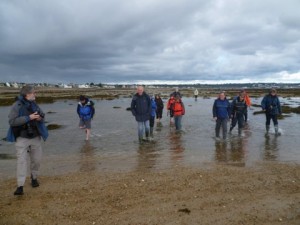Using the mark one eyeball
Last Sunday (14/10) our kayak trips saw a mix of weather conditions which demonstrated just how fast weather systems move through the Channel islands, and how localised conditions can be.
For most of the week the forecasts had been pretty mixed -to put it mildly- but by Friday night things were looking more settled with little rain forecast and a north to north east wind. Ideal for a trip out of St Brelade going west.
Mick and I were scheduled to lead a couple trips for the Outdoor Writers and Photographers Guild conference being held in Jersey.
The morning session started with sunshine. I even nipped back to the van to put on my sun glasses. The forecast said sunshine and a shower. A winter coat would have been a better option….
30 minutes later a “monsoon” like rain cloud decided to dump loads of rain on us. At the same time the north wind increased to around a force 5 and the temperature dropped rapidly. Luckily we were in a sheltered bay. Things might have been very different had we been some way offshore. By 1115 the sun was back out and the wind had dropped.
In contrast Trudie was leading a guided walk to Seymour tower with some conference delegates. I assumed she was going to be pleased to have the key into Seymour tower so they’d be able to dry out. I was wrong. When I phoned at 1230 she’ reported no rain at all. We were less than 4 miles apart and experienced very different weather.
When I checked the weather observations at Maison St Louis it showed no rain during the morning.
By the afternoon we were back in sunshine and exploring the coastline with light northerly wind.
Using the “mark one eyeball”
We increasingly rely on weather forecasts. This shows just how important it is to keep an eye on the weather around you and be prepared to change plans- or just hide in a sheltered bay or gully until things improve. Even with forecasts getting more and more accurate, things can change rapidly. Keep an eye on the weather by using the mark one eyeball!
“Instant weather forecasting” by Alan Watts remains a good guide to cloud formations.
Here are a couple of good long range forecast links:
By Derek Hairon on Google+
Google


